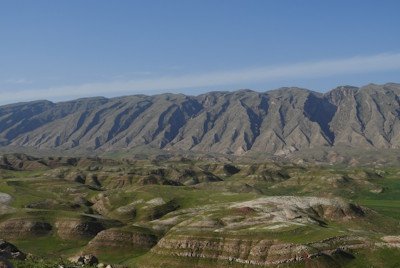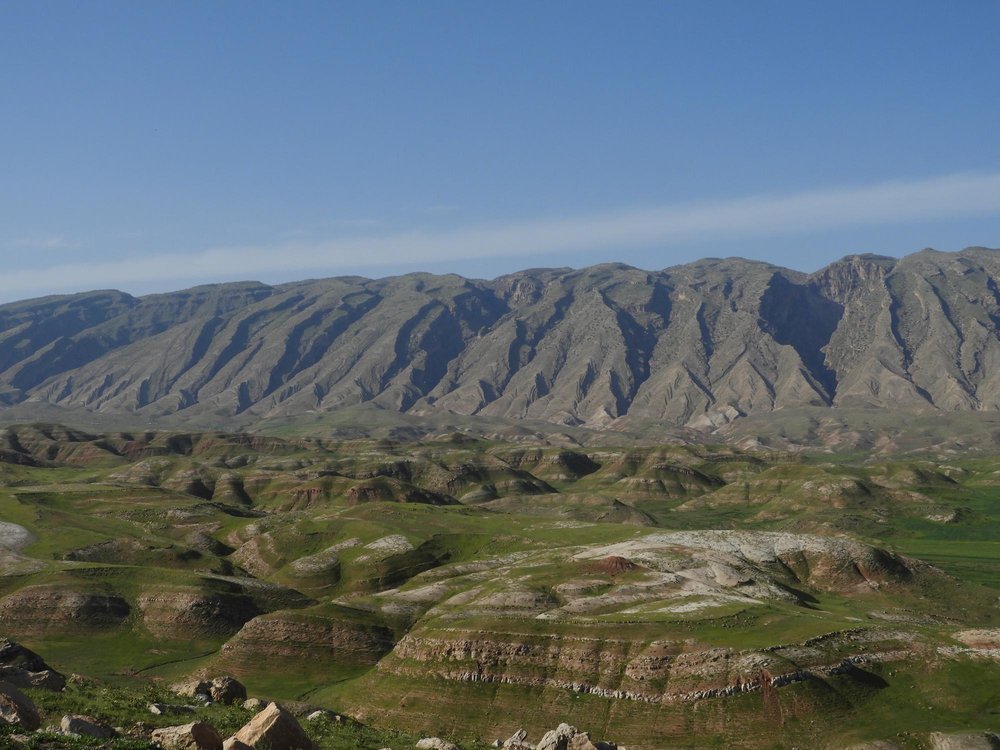Iran
The Prehistoric Sites of the Khorramabad Valley
The Prehistoric Sites of the Khorramabad Valley show evidence of human occupation dating back to 63,000 BP. Khorramabad Valley is one of the few natural passages in the Zagros Mountains, and it was a key route of human dispersal out of Africa. Inside five caves and a rock shelter in the valley, traces of habitation by Neanderthals and anatomically modern humans have been found. These include shell pendants from the Persian Gulf, stone tools and ochre pigments.
Community Perspective: Zoë managed to get up to Kogan Cave and recommends visiting the museum at the castle for more background on the whole valley.
Site Info
Official Information
- Full Name
- The Prehistoric Sites of the Khorramabad Valley (ID: 5209)
- Country
- Iran
- Status
-
Nominated 2025
Site history
History of The Prehistoric Sites of the Khorramabad Valley
- 2007: Added to Tentative List
- Added to tentative list
- 2010: Incomplete - not examined
- Ailinginae Atoll
- Criteria
- iii
Links
- UNESCO
- whc.unesco.org
All Links
UNESCO.org
- whc.unesco.org — whc.unesco.org
Community Information
- Community Category
- Paleontology: Human evolution
- Natural landscape: Desert
Travel Information
Recent Connections
-
Palaeolithic and Mesolithic
"The prehistoric caves and rock shelter… -
Neolithic age
Archaeological material from the Neolit… -
Neanderthals
"The nominated series is crucial to our…
Connections of The Prehistoric Sites of the Khorramabad Valley
- History
-
-
Mousterian
"The Mousterian layers in Kunji Cave testify to the domination of the Neanderthals in the valley during the Middle Palaeolithic." - "The prehistoric caves and rock shelters (...) already provide outstanding material evidence of Mousterian and Baradostian cultures ranging from the Middle to the Upper Palaeolithic (...)." (AB Ev) -
Palaeolithic and Mesolithic
"The prehistoric caves and rock shelters (...) already provide outstanding material evidence of Mousterian and Baradostian cultures ranging from the Middle to the Upper Palaeolithic (...)." (AB Ev) -
Neolithic age
Archaeological material from the Neolithic was found in Kaldar Cave, Ghamari Cave and Gilvaran Cave. (AB Ev) -
"Cave Man" sites
"The caves and shelters bear witness to the domination of the Neanderthals, to the arrival and expansion of the anatomically modern humans who eventually supplanted the Neanderthals in the valley, and provide insight into the migratory route of human dispersal out of Africa." (AB Ev) -
Chalcolithic
Kaldar Cave, Ghamari Cave and Gilvaran Cave have produced archaeological material of the Chalcolithic. (AB Ev) -
Neanderthals
"The nominated series is crucial to our understanding of Neanderthals and anatomically modern humans and their ways of life in this region (...)." – "The proposed reduced series, comprising component parts 1 to 6, testifies to the final phase of Neanderthal presence in Eurasia, the coexistence of the Neanderthals and anatomically modern humans (...)." (AB Ev)
-
- Human Activity
-
-
Human Migration
"(...) the prehistoric sites (...) bear witness to the domination of the Neanderthals, to the arrival and expansion of the anatomically modern humans who eventually supplanted the Neanderthals in the valley, and provide insight into the migratory route of human dispersal out of Africa. (AB Ev)
-
- Timeline
-
-
Late Pleistocene
"The Prehistoric Sites of the Khorramabad Valley comprise five prehistoric caves and one rock shelter with evidence of human occupation dating back to 63,000 BP." (AB Ev)
-
- Science and Technology
-
-
Archaeological potential
"The archaeological resources are largely undisturbed, constituting a vast authentic knowledge reservoir for future research." – "The prehistoric caves and rock shelters, of which the full academic potential has yet to be fully explored (....)" – "ICOMOS is aware that the nominated prehistoric caves and rock shelters have not yet been fully excavated, that a scientific appraisal of their academic potential is absent, and that future research has been envisaged by the State Party." (AB Ev)
-
- Visiting conditions
-
-
Archaeological Site Reburial
Kaldar Cave: "Further excavation of the wider area revealed five layers of deposit, dating from the Islamic and Historical eras, Iron Age, Bronze Age, Chalcolithic, Neolithic, as well as the Upper and Early Upper Palaeolithic, and Middle Palaeolithic periods." – "A test pit at Ghamari Cave revealed five levels of deposits covering the Middle and Upper Palaeolithic, Neolithic, Chalcolithic, Bronze Age and Islamic periods." – "In front of the Gilvaran Cave, a sondage pit testifies to the existence of a multi-layered agricultural society dating to the Islamic, Bronze Age, Chalcolithic and Neolithic periods." (AB Ev) -
Archaeological Site Reburial
"The excavated parts within the caves have been backfilled, and protected with wooden walkways." (AB Ev)
-
News
No news.
Recent Visitors
- Adrian Turtschi
- Afshin Iranpour
- Bernard Joseph Esposo Guerrero
- Erik Jelinek
- henryjiao18
- Martina Rúčková
- Roman Bruehwiler
Visitors of The Prehistoric Sites of the Khorramabad Valley
Community Reviews
Show full reviewsZoë Sheng
The Prehistoric Sites Of The Khorramabad Valley
The Prehistoric Sites of the Khorramabad Valley (Nominated)

Don't do what I did: come here in winter! It gets snowy in the area. The area is still open though. The main attraction and definitely ONE of Iran's main attraction to see is Falak ol-Aflak aka Shapur Khast Castle which is based on the town of Khorramabad. It makes me wish I had a drone to cover it better, similar to Palmanova. The pictures you can find online are better and definitely something that will inspire you to go. So maybe Iran isn't quite on the "green" list of places to go with their political drama but if you DO make it to Iran then don't just visit Tehran and ensure you visit the castle.
The location of the valley encompasses the entire area. In fact I don't think it REALLY wants to cover the castle as well. It is more about the caves that are not all visitable as far as I understand. Let's first finish off the castle though. Inside, which is mainly nice for the shape, you also gets a museum. It covers the entire valley stuff too so while it isn't going to be major insight into life 40,000 years ago you will learn more about the area and it's surely a must-see.
As for caves, I suggest Kogan Cave. It's a bit south of Khorramabad. It took me an hour to reach the places to park but wait, you still have to hike up to the actual cave! It takes a good …
Keep reading 0 comments
